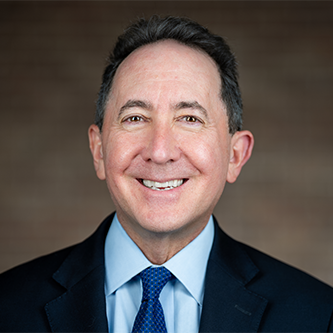September 2025 Market Commentary | OnePoint BFG Wealth Partners
Monthly Update
I write this September letter on October 1st where the US federal government is partially shut down as both sides could not come to a short-term funding agreement. However, if there is anything as certain as death and taxes it is that the government will eventually reopen with likely limited economic and financial consequences during the disruption in the context of a $30 Trillion1 economy. Therefore, investors are going to look past this political stalemate.
With the help of a continuation of the GenAI tech trade, along with optimism that Federal Reserve interest rate cuts will ease the cost of capital burden on small and medium sized businesses and on households too, the S&P 500 rallied in September for a 5th straight month by 3.5%2 and the small cap Russell 2000 index rose by 3%3. With the tech dominated NASDAQ, it jumped 5.6%4. The equity market rally was global too with the international markets continuing with its strong performance and year-to-date outperformance relative to the US stock market after many years of underperformance.
When including the weakness in the US dollar, the international market strength has been striking. As of this writing, in dollar terms the German DAX is up year to date by 37%5, the Spanish IBEX by 52%6, the Italian MIB by 43%7 and the Hang Seng by 34%8 to name a few. We must remember that about 75%9 of the world’s GDP takes place outside the US and 96% of the world’s population lives outside the US, and why we believe in investing globally.
The Federal Reserve cut interest rates in mid-September by 25 basis points10 to a range of 4-4.25% as widely anticipated after Jay Powell basically told us that was what the Fed was going to do when he spoke in Jackson Hole at the end of August. Leading into the meeting, the market started pricing in a multiple path of rate cuts into next May when Powell’s term ends. However, since the meeting, many Fed members, both voting and non-voting, expressed reservations about a subsequent aggressive path of cuts. Instead, they mostly want to ‘play it by ear’ as there is a very tricky balancing act going on with a slowing pace of hiring’s in the labor market at the same time inflation is running at about 3%11, well above their 2% target12. Yes, some Fed members want to cut multiple times in the coming meetings, and it could happen but Chair Powell seems more non-committal until he sees more economic data.
What really got the rate cut juices flowing prior to the September meeting was the August jobs data seen in the early part of the month that were soft but as seen after the September 2024 rate cutting, long term interest rates, after falling going into the meeting, have since risen and we watch to see if that will continue.
With regards to the trade off between the labor market and inflation that the Fed is juggling, also on the day I write this piece, the ADP private sector jobs report reflected a decline of 32k jobs in September which was well worse than the estimate of an increase of 52k. This followed a job loss of 3k in August which was revised down from an initial print of +54k. On the other hand, core inflation, ex food and energy was 2.9%13 in August in the Fed’s preferred inflation metric PCE. Core CPI was 3.1%14. This remains about 50% above the Fed’s sustainable 2% goal15. Jay Powell in a late September speech highlighted the Fed’s conundrum in dealing with the current landscape, “Near-term risks to inflation are tilted to the upside and risks to employment to the downside – a challenging situation. Two-sided risks mean that there is no risk-free path.”
Holding rates steady in September were the Bank of England and the European Central Bank along with the Reserve Bank of Australia and some others. The Bank of Canada cut rates by 25 basis points to 2.50%16 but we might not get anymore for now from them. Each country/region is dealing with their own idiosyncratic circumstances but I don’t think the inflation story is dead and still expect inflation volatility in the few years to come. Of note, longer term interest rates around the world remains elevated and we expect the Bank of Japan to resume raising interest rates possibly in late October and maybe again in December.
After averaging 1.6%17 economic growth in the first half of 2025, the US economy remains mixed and uneven. The biggest area of strength remains the tremendous GenAI infrastructure buildout where it seems almost everyday there is a fresh announcement of a new data center being built somewhere. It is not only the chip makers like Nvidia that benefit but also the producers of cement, steel, aluminum, cooling equipment and all the other inputs to building these massively large buildings. It also begs the question of whether we are overbuilding relative to what the demand will be but only in retrospect will we know if and to what extent.
The upper income spender continues to also hold the economy on its shoulders as the lower to middle income consumer remains financially stressed due to the cumulative rise in inflation and now worries with the labor market. Government spending has been a large boost to growth but its pace of spending is modestly slowing. On the flip side, manufacturing has been dealing with a recession for more than two years now and the tariffs are a real burden. Housing has been challenged due to affordability issues that resulted in the pace of existing home sales at the lowest in 30 years. The hope is that transaction activity can lift from here as home price gains slow and mortgage rates have fallen. Also, global trade is muted and capital spending ex AI has been lackluster.
Noteworthy in September, and all year for that matter and a few years prior, is the continued rally in gold, silver and other metals like platinum and palladium. As of this writing, gold is at a fresh record high of around $3,900 as continued strong buying by central banks is now being joined by retail purchases as seen in the rise in ETF holdings. The miners too have caught up as they benefit from the leverage of higher prices of their product while keeping costs in check. Gold has become again an important central reserve asset taking ‘market share’ from US dollar holdings around the world. Silver is playing catch to gold and platinum and palladium are benefiting from hybrid vehicles winning the EV war versus full battery powered EVs. Hybrids use as much, if not more, platinum and palladium than an internal combustion engine and the World Platinum Investment Council is forecasting another year of supply deficits relative to demand in 2025.
Conclusion
As always the case, a lot of moving parts here to the macro environment with a very bifurcated economic and market backdrop. One’s crystal ball is always cloudy as predicting the future is extraordinarily difficult and typically a fools game. That said, it seems now that it is even more muddy than usual. The GenAI tech trade has been tremendous as has its impact on the US economy, and globally too. But do the stocks already reflect a lot of optimism and will the returns on this investment be worth all the spend. And what happens if too much spend is taking place like seen with fiber optics in the late 1990’s and we get overcapacity? What’s the tariff landscape going to look like at the end of the day and after the Supreme Court rules soon on the use of them? Is the big outperformance in international markets going to be fleeting or something longer lasting and how will the direction of the US dollar flow into this? These are all the things, among others, that we are constantly thinking about and trying to integrate into our investment process.
Either way, and something I say each and every letter, whatever comes our way it remains vital that investors have adequate short-term liquidity over the next 2-3 years. Knowing that period is covered can help separate the balance of one’s portfolio from the ups and downs of the market. Time horizon is always crucial and is always the best friend of any investor.
Disclaimer
The opinions voiced in this material are for general information only and are not intended to provide specific advice or recommendations for any individual. The market and economic data is historical and is no guarantee of future results. All indices are unmanaged and may not be invested into directly. The information in this report has been prepared from data believed to be reliable, but no representation is being made as to its accuracy and completeness.
Any company names noted herein are for educational purposes only and not an indication of trading intent or a solicitation of their products or services.
Nothing in this material should be construed as investment advice offered by Bleakley Financial Group, LLC or Peter Boockvar. This market update is for informational purposes only and is not meant to constitute a recommendation of any particular investment, security, portfolio of securities, transaction or investment strategy. No chart, graph, or other figure provided should be used to determine which securities to buy, sell or hold. No representation is made concerning the appropriateness of any particular investment, security, portfolio of securities, transaction or investment strategy. You should speak with your own financial professional before making any investment decisions.
Past performance is not indicative of future results. Neither Bleakley Financial Group, LLC nor Peter Boockvar guarantees any specific outcome or profit. These disclosures cannot and do not list every conceivable factor that may affect the results of any investment or investment strategy. Risks will arise, and an investor must be willing and able to accept those risks, including the loss of principal.
Certain statements contained herein are statements of future expectations and other forward-looking statements that are based on opinions and assumptions that involve known and unknown risks and uncertainties that would cause actual results, performance or events to differ materially from those expressed or implied in such statements.
The economic forecasts set forth in this material may not develop as predicted and there can be no guarantee that strategies promoted will be successful. The fast price swings in commodities and currencies will result in significant volatility in an investor’s holdings. International investing involves special risks such as currency fluctuation and political instability and may not be suitable for all investors. These risks are often heightened for investments in emerging markets. The fast price swings in commodities and currencies will result in significant volatility in an investor’s holdings.
Investment advisory and financial planning services offered through Bleakley Financial Group LLC, an SEC registered investment adviser. Peter Boockvar is solely an investment advisor representative and Chief Investment Officer of Bleakley Financial Group.
1-19 Bloomberg
OP# 25-1005
About the Author


Connect With An Advisor to Learn More
Our experienced advisors can help you navigate your unique financial journey with personalized strategies. Schedule a consultation today to take the first step toward yourfinancial goals.